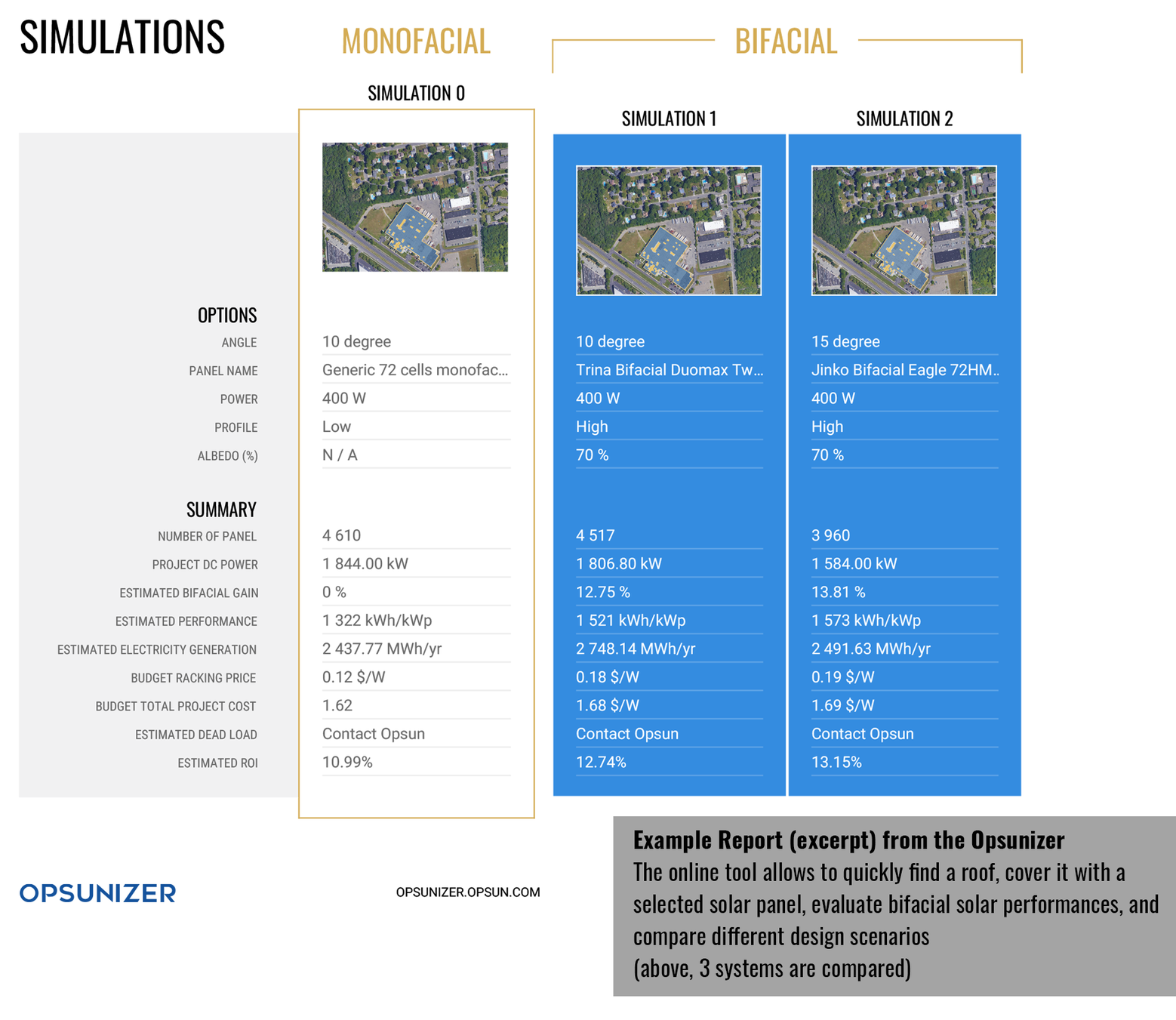Solar Optimization: what if you could be producing more energy while installing fewer solar panels?
Developers and investors looking for ways to increase their return on investment should question the established model of installing as many solar panels as possible on a given roof, and instead seek to obtain the maximum energy generation with as few solar panels as needed.
Solar optimization is the new buzz word for flat rooftop solar. In the past, flat commercial rooftop solar systems, such as 5 degrees tilt and east-west (A-shape) systems were common, under the conception that more power meant a better system. Truth is, what really counts for owners and investors is how many kWh the system will produce over its lifetime. “Solar Optimization” means seeking to obtain the maximum amount of usable electricity for each panel installed, for 20+ years.
Increasing the return on investment of a solar installation has historically been done by reducing the cost of installation (in $/W) and increasing the size of the systems (Watts rating) as much as possible. This was the simple, standard way of imagining solar projects for the last decades. But this model has been shaken when large utility-scale ground-mounted solar systems started showing up on single-axis trackers. The capex of going with trackers can certainly be higher than fixed-tilt systems, but the extra 20%+ energy yield convinced developers and investors to change their paradigms.
The same is happening with flat commercial rooftop and bifacial solar panels: by leveraging the backside efficiency of bifacial solar panels, and by raising the array tilt angle and height from the roof, an extra 8% to 20% energy can be harvested from an optimized bifacial solar panels installation, versus the same roof with monofacial panels. Given that the solar panel's back is entirely unobstructed by rails or wind deflectors, as it is the case with Opsun Sunrail SR3 bifacial racking, for example.
As the sun travels the sky, a portion of the diffuse light that bounces on clouds and surrounding structures is reflected on the roof membrane and reaches the solar panels from the back. It acts as a passive tracker, flattening the production curve and boosting maximum output power (as limited by the inverters which must have a lower DC to AC ratio).
Why optimize?
By optimizing a rooftop solar system, the owners will benefit from more usable or sellable electricity per panel installed, lower installation time and cost, while having fewer panels to service on the long term. The result will be lower up front expenses, lower O&M cost, and higher revenues.
The reason ground-mounted systems are usually set at about 30° is that it is optimal for solar panels, since they capture more light and cool better at higher tilt angles. Then why limit flat rooftops systems at a mere 5°? As for ground-mounted solar systems, optimization on flat roofs means a higher tilt angle, height and interrow spacing, each of which will boost individual panel's performance.
Just like with a sport car, several details must be tweaked for a solar system to perform, and owners and investors will benefit from a high-performance system. It's not just about having the largest engine (kilowatt peak), it's about optimizing each part to produce more electricity (kWh)!
The difficulty lies in comparing the return on investment of a 10° tilt monofacial vs a 10° or even 15° tilt bifacial system. It is not an easy task, and it can be quite time consuming, which explains that often only 5° or 10° are evaluated.
The Tool: The Opsunizer
Opsun offers an online tool called the Opsunizer allowing solar developers, building owners and investors to quickly and simply build several different solar systems, and compare their production and ROI on a given roof. A quick design and comparison of a monofacial vs a bifacial solar system having the same footprint, for example, can be created with a few clicks. The Opsunizer unlocks a toolset useful to developers looking to create and build an optimized, high energy production bifacial solar system.
Owners of buildings with white TPO or EPDM roofs can, for instance, log on the platform, find their building, quickly fill the roof with solar panels and compare different designs, each leading to different electricity productions, and different return on investments.
Within minutes, a solar system can be optimized and an ideal, highest cost-benefit solution can be determined. This will help owners guide the solar project development in its first steps. Opsun, as a commercial partner and racking manufacturer, can then help during the engineering phase by supporting the optimization of all parts of the complete solar system.
In an era where solar energy goes hand-in-hand with reducing pollution and waste, using each solar panel to its full potential, and thus increasing the bottom line, should be a concern for all conscientious solar project creator
